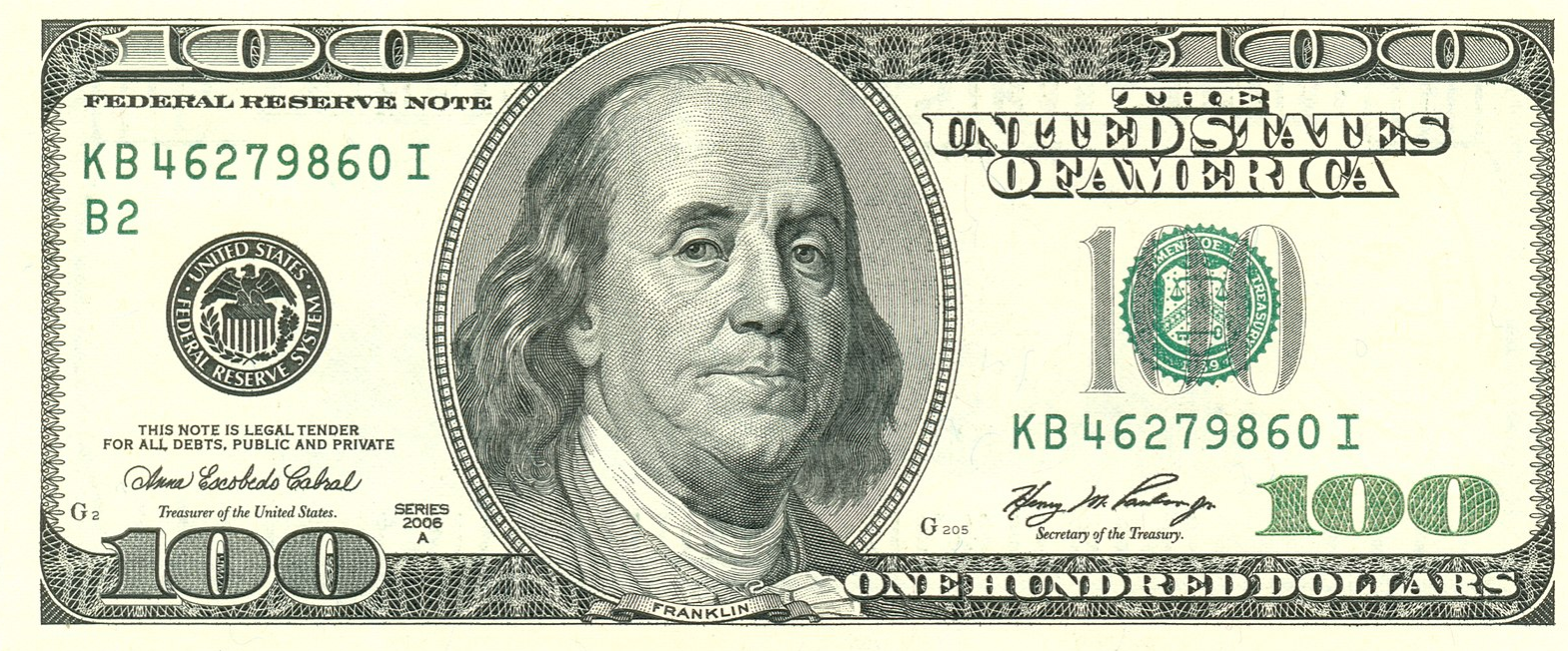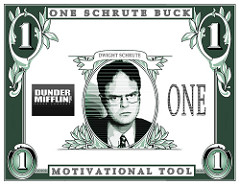4.8: The Role of Money
- Page ID
- 1700
\( \newcommand{\vecs}[1]{\overset { \scriptstyle \rightharpoonup} {\mathbf{#1}} } \)
\( \newcommand{\vecd}[1]{\overset{-\!-\!\rightharpoonup}{\vphantom{a}\smash {#1}}} \)
\( \newcommand{\dsum}{\displaystyle\sum\limits} \)
\( \newcommand{\dint}{\displaystyle\int\limits} \)
\( \newcommand{\dlim}{\displaystyle\lim\limits} \)
\( \newcommand{\id}{\mathrm{id}}\) \( \newcommand{\Span}{\mathrm{span}}\)
( \newcommand{\kernel}{\mathrm{null}\,}\) \( \newcommand{\range}{\mathrm{range}\,}\)
\( \newcommand{\RealPart}{\mathrm{Re}}\) \( \newcommand{\ImaginaryPart}{\mathrm{Im}}\)
\( \newcommand{\Argument}{\mathrm{Arg}}\) \( \newcommand{\norm}[1]{\| #1 \|}\)
\( \newcommand{\inner}[2]{\langle #1, #2 \rangle}\)
\( \newcommand{\Span}{\mathrm{span}}\)
\( \newcommand{\id}{\mathrm{id}}\)
\( \newcommand{\Span}{\mathrm{span}}\)
\( \newcommand{\kernel}{\mathrm{null}\,}\)
\( \newcommand{\range}{\mathrm{range}\,}\)
\( \newcommand{\RealPart}{\mathrm{Re}}\)
\( \newcommand{\ImaginaryPart}{\mathrm{Im}}\)
\( \newcommand{\Argument}{\mathrm{Arg}}\)
\( \newcommand{\norm}[1]{\| #1 \|}\)
\( \newcommand{\inner}[2]{\langle #1, #2 \rangle}\)
\( \newcommand{\Span}{\mathrm{span}}\) \( \newcommand{\AA}{\unicode[.8,0]{x212B}}\)
\( \newcommand{\vectorA}[1]{\vec{#1}} % arrow\)
\( \newcommand{\vectorAt}[1]{\vec{\text{#1}}} % arrow\)
\( \newcommand{\vectorB}[1]{\overset { \scriptstyle \rightharpoonup} {\mathbf{#1}} } \)
\( \newcommand{\vectorC}[1]{\textbf{#1}} \)
\( \newcommand{\vectorD}[1]{\overrightarrow{#1}} \)
\( \newcommand{\vectorDt}[1]{\overrightarrow{\text{#1}}} \)
\( \newcommand{\vectE}[1]{\overset{-\!-\!\rightharpoonup}{\vphantom{a}\smash{\mathbf {#1}}}} \)
\( \newcommand{\vecs}[1]{\overset { \scriptstyle \rightharpoonup} {\mathbf{#1}} } \)
\( \newcommand{\vecd}[1]{\overset{-\!-\!\rightharpoonup}{\vphantom{a}\smash {#1}}} \)
\(\newcommand{\avec}{\mathbf a}\) \(\newcommand{\bvec}{\mathbf b}\) \(\newcommand{\cvec}{\mathbf c}\) \(\newcommand{\dvec}{\mathbf d}\) \(\newcommand{\dtil}{\widetilde{\mathbf d}}\) \(\newcommand{\evec}{\mathbf e}\) \(\newcommand{\fvec}{\mathbf f}\) \(\newcommand{\nvec}{\mathbf n}\) \(\newcommand{\pvec}{\mathbf p}\) \(\newcommand{\qvec}{\mathbf q}\) \(\newcommand{\svec}{\mathbf s}\) \(\newcommand{\tvec}{\mathbf t}\) \(\newcommand{\uvec}{\mathbf u}\) \(\newcommand{\vvec}{\mathbf v}\) \(\newcommand{\wvec}{\mathbf w}\) \(\newcommand{\xvec}{\mathbf x}\) \(\newcommand{\yvec}{\mathbf y}\) \(\newcommand{\zvec}{\mathbf z}\) \(\newcommand{\rvec}{\mathbf r}\) \(\newcommand{\mvec}{\mathbf m}\) \(\newcommand{\zerovec}{\mathbf 0}\) \(\newcommand{\onevec}{\mathbf 1}\) \(\newcommand{\real}{\mathbb R}\) \(\newcommand{\twovec}[2]{\left[\begin{array}{r}#1 \\ #2 \end{array}\right]}\) \(\newcommand{\ctwovec}[2]{\left[\begin{array}{c}#1 \\ #2 \end{array}\right]}\) \(\newcommand{\threevec}[3]{\left[\begin{array}{r}#1 \\ #2 \\ #3 \end{array}\right]}\) \(\newcommand{\cthreevec}[3]{\left[\begin{array}{c}#1 \\ #2 \\ #3 \end{array}\right]}\) \(\newcommand{\fourvec}[4]{\left[\begin{array}{r}#1 \\ #2 \\ #3 \\ #4 \end{array}\right]}\) \(\newcommand{\cfourvec}[4]{\left[\begin{array}{c}#1 \\ #2 \\ #3 \\ #4 \end{array}\right]}\) \(\newcommand{\fivevec}[5]{\left[\begin{array}{r}#1 \\ #2 \\ #3 \\ #4 \\ #5 \\ \end{array}\right]}\) \(\newcommand{\cfivevec}[5]{\left[\begin{array}{c}#1 \\ #2 \\ #3 \\ #4 \\ #5 \\ \end{array}\right]}\) \(\newcommand{\mattwo}[4]{\left[\begin{array}{rr}#1 \amp #2 \\ #3 \amp #4 \\ \end{array}\right]}\) \(\newcommand{\laspan}[1]{\text{Span}\{#1\}}\) \(\newcommand{\bcal}{\cal B}\) \(\newcommand{\ccal}{\cal C}\) \(\newcommand{\scal}{\cal S}\) \(\newcommand{\wcal}{\cal W}\) \(\newcommand{\ecal}{\cal E}\) \(\newcommand{\coords}[2]{\left\{#1\right\}_{#2}}\) \(\newcommand{\gray}[1]{\color{gray}{#1}}\) \(\newcommand{\lgray}[1]{\color{lightgray}{#1}}\) \(\newcommand{\rank}{\operatorname{rank}}\) \(\newcommand{\row}{\text{Row}}\) \(\newcommand{\col}{\text{Col}}\) \(\renewcommand{\row}{\text{Row}}\) \(\newcommand{\nul}{\text{Nul}}\) \(\newcommand{\var}{\text{Var}}\) \(\newcommand{\corr}{\text{corr}}\) \(\newcommand{\len}[1]{\left|#1\right|}\) \(\newcommand{\bbar}{\overline{\bvec}}\) \(\newcommand{\bhat}{\widehat{\bvec}}\) \(\newcommand{\bperp}{\bvec^\perp}\) \(\newcommand{\xhat}{\widehat{\xvec}}\) \(\newcommand{\vhat}{\widehat{\vvec}}\) \(\newcommand{\uhat}{\widehat{\uvec}}\) \(\newcommand{\what}{\widehat{\wvec}}\) \(\newcommand{\Sighat}{\widehat{\Sigma}}\) \(\newcommand{\lt}{<}\) \(\newcommand{\gt}{>}\) \(\newcommand{\amp}{&}\) \(\definecolor{fillinmathshade}{gray}{0.9}\)The Role of Money
“The mint makes it first, it is up to you to make it last.” - Evan Esar
As humans have evolved, so has the concept of trade and money. We determined that a barter economy, or a moneyless economy that relied on trade, would work for a simple society, but it could not work for a complex society. Without money, trade is not always easy or mutually beneficial. The use of money has made life and trade much easier on a country and its population. Money functions as a medium of exchange, a measure of value, and a store of value. Money is portable, durable, easily divisible, and limited in availability. Money has evolved so much over the last two hundred years that it has moved from gold and silver coins to paper currency, to checks, debit cards, and credit cards.
Universal Generalizations
- Money is what people in a society regularly use when purchasing or selling goods and services
- Money is any substance that functions as a medium of exchange, a measure of value, and a store of value.
- Money serves several functions: a medium of exchange, a unit of account, a store of value, and a standard of deferred payment.
Guiding Questions
- What functions does money serve in an economy?
- What is the characteristic of commodity money, fiat money, and representative money?
- What are the advantages and disadvantages of bartering, using currency and credit/debit cards for exchanges?
Functions of Money
What does money actually do? Economists usually subdivide its functions into three categories: a medium of exchange, a store of value, and a unit of value.
Video: Functions of Money
Defining money is almost as tricky as defining air. It's something we use every day, but most people don't stop to think about what money is. Money is hard for most people to describe because, at its core, money is an idea. Conceptually, anything is considered money if it functions as:
- a medium of exchange,
- a store of value, and
- a unit of account.
Given that money can have such a broad interpretation, we use monetary aggregates to measure the money supply, with categories based on liquidity.
Key Terms
| Key term | Definition |
| money | any asset that can serve the three functions of money; if a group of people got together and agreed that bubble gum wrappers serve as a 1) medium of exchange, 2) a store of value, and 3) a unit of account, then bubble gum wrappers are now money. |
| a medium of exchange | the ability for something be used to purchase something else, such as "I can use this \$5$5dollar sign, 5 bill to buy a grilled cheese and peanut butter sandwich" |
| a store of value | the ability to delay using money as a medium of exchange until later, such as "I am going to keep this \$5$5dollar sign, 5 bill in my wallet so I can buy a grilled cheese and peanut butter sandwich tomorrow" |
| a unit of account | the ability to represent the value of an item, such as "this grilled cheese and peanut butter sandwich costs \$5$5dollar sign, 5" |
| currency in circulation | money outside of banks, such as money in your wallet or your couch cushions; the money in your pocket is currency in circulation, but your money in your bank account is outside of circulation. |
| currency in vaults | (also called reserves) money that banks keep within the bank, outside of circulation |
| required reserves | the fraction of money a bank is required to put aside and not use for loans or any other purpose, usually required by banking regulations; this fraction is based on the amount of money that has been deposited into the bank, such as 20\%20%20, percent of all deposits. |
| demand deposits | deposits placed into banks that a bank must return to the account holder on demand; checking accounts are examples of demand deposits because the bank must allow you to withdraw it or use it at any time. |
| the transactions motive | when people hold money for the purpose of buying things |
| M1 | assets that can be directly used to carry out the transactions motive of money; M1 is sometimes called “narrow money” because this is the narrowest definition of the money supply. |
| M2 | financial assets that aren’t directly used for a medium of exchange, but can be converted into cash or a checking account; M2 is sometimes called “near money” because it is nearly as liquid as M1, but not quite as liquid. |
| money supply | the total amount of money in an economy that can carry out the transactions motive; in most countries, the money supply is either the monetary aggregate M1 or M2 |
| monetary aggregates | an overall measure of the money supply that includes different forms of money which are categorized based on liquidity; the most commonly used monetary aggregates are M1 and M2 |
| monetary base | (also called high powered money) the sum of currency in circulation and bank reserves held in vaults; only part of the monetary base (currency in circulation) is counted in the money supply. |
| commodity money | money that has intrinsic value in other uses; gold and salt are examples of things that have been used as commodity money. |
| fiat money | money that gets its value entirely from its status as a means of payment; paper money is fiat money because its value for its use as a currency is far higher than the intrinsic value of a small scrap of paper. |
| commodity backed money | money that has no inherent value, but it has a value guaranteed by a promise that it can be converted into something of value; for example, if the nation of Johnsrudia uses bubble gum wrappers as its currency, but you can exchange those for their equivalent value in gold, this would be commodity backed money. |
The Three Functions of Money
Money is just one of many types of assets. What makes money different from other assets is its ability to do more than just store value. Most importantly, for an asset to be considered money, it must be accepted as a form of payment.
Interestingly, almost anything can be money as long as it can act as:
- a medium of exchange
- a store of value
- a unit of account
A Medium of Exchange
The most important function of money is its use as a way of buying things, in other words, as a medium of exchange. If your grandmother sends you \$20$20 dollar sign, 20tucked in a birthday card, you can take that and buy whatever you want with that money. Well, up to \$20$20dollar sign, 20 worth of whatever you want.
A Store of Value
What if you have money, but don’t know what you want to spend it on yet? But, suppose you had no idea what you wanted? You save that \$20$20dollar sign, 20 in your room and spend another day. That is money acting as a store of value. If money fails as a store of value, it will also fail as a medium of exchange. If money didn’t keep its value for later, you would have to spend it immediately on something before it became worthless.
A Unit of Account
This function makes transactions easier to carry out because it means money can give a specific value to something. Suppose there are three people with goods to trade. Caleb wants to sell a snake habitat in exchange for three pizzas, Cadell wants to sell a pizza in exchange for two movie tickets, and Caprice wants to sell four movie tickets in exchange for two snake habitats. Trying to untangle these exchange prices would cause quite a headache. Instead, it's much easier to value these goods using a single, common currency.
| Example of Money | Why It is Considered Money |
|
Image credit: "Front of the U.S. \$100$100dollar sign, 100 Federal Reserve note," Wikimedia Commons |
A printed US \$100$100dollar sign, 100 bill can serve all three functions of money: act as a medium of exchange, store of value, and unit of account. |
|
Image credit: "Palau house with yapese stones NOAA," Dr. James P. McVey, NOAA Sea Grant Program, Wikimedia Commons |
These giant stones leaning up against this home are one of the official currencies on the island of Yap in Micronesia. These stones might not even belong to the people living in this home because the stones are rarely moved, even if they have been exchanged for something. |
|
Image credit: "Schrutebuck," methodshop.com, [CC BY 2.0] |
In the T.V. show “The Office”, a manager developed a currency called the “Schrute buck” (SB) as a motivational tool. You could earn SBs by “doing something good.” It is money because it 1) served as a medium of exchange (you can buy extra break time at your job with them) 2) served as a unit of account (\$1000$1000dollar sign, 1000 SB was worth 5 minutes of additional break time), and 3) serves as a store of value (you can store your SB in your desk until you are ready to use it). |
MB = cash and coins in circulation + bank reserves
Key Equations
M1 = cash and coins in circulation + checkable bank deposits + travelers checks
M2 = M1 + savings accounts + small CDs + money market mutual funds
Common Misperceptions
- Monetary aggregates might be easy to confuse with each other. An easy way to remember them is that the higher the number on the aggregate is, the less liquid that kind of money is. M2 is less liquid than M1.
- It might be confusing that checking accounts are considered narrow money, but savings accounts are considered near money. The reason for this is that savings accounts tend to have some limitations on them that checking accounts usually do not. Most checking accounts are demand deposit. Savings accounts frequently will have limitations such as being only able to make five withdrawals per month or having to wait ten days after you deposit money to get them.
- You might see a reference to an even broader monetary aggregate in your textbook or class and be confused why it isn't here. The monetary aggregate M3 is tracked in some countries, but not others (the U.S. stopped tracking this category in 2006). If you see M3 elsewhere, the most important thing to remember about it is that M3 is less liquid than M2. In fact, you might even see a broader category called L, which is even less liquid than M3. -Are cryptocurrencies money? There is actually some debate about whether cryptocurrencies (such as bitcoin) are money or just a financial asset. In fact, central banks around the world are grappling with this question right now, and there isn’t any consensus on this issue. The main sticking point to argue that cryptocurrencies aren’t money is that they generally cannot be used as legal tender (in other words, to buy stuff). Not a lot of stores are equipped to take cryptocurrencies to buy goods and services, at least not yet. As of right now, cryptocurrencies aren’t included in either the narrow or broad definition of the money supply.
Video: Commodity Money vs. Fiat Money
Source: Khan Academy, www.khanacademy.org/economics-finance-domain/macroeconomics/monetary-system-topic/functions-of-money-2/v/commodity-money-vs-fiat-money
 Answer the self check questions below to monitor your understanding of the concepts in this section.
Answer the self check questions below to monitor your understanding of the concepts in this section.Self Check Questions
- Explain the three functions of money. Which function of money do you feel is most important to your daily life? Why?




